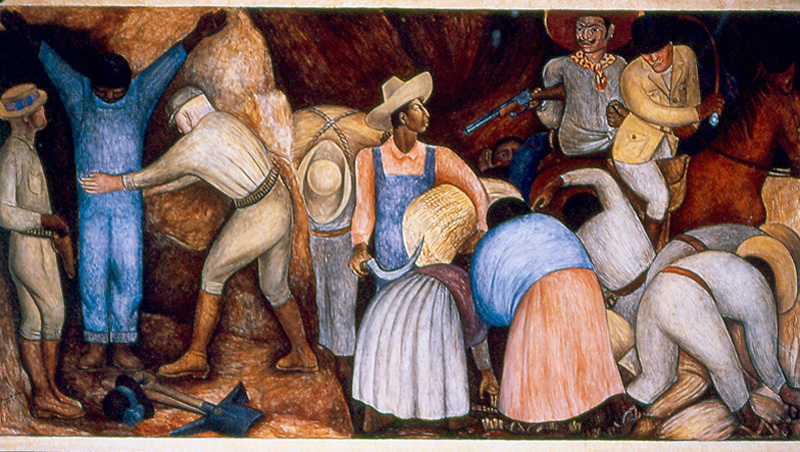
Diego Rivera (10) |
 |
|---|
Source: WTL research files. Mural: "Formation of Revolutionary Leadership" (1926-1927), in the chapel at the Universidad Autónoma de Chapingo. Comments: In 1926 and 1927, Rivera undertook murals at this Mexican public university; he painted nude canvases of his pregnant wife (he separated from her in 1926); and he was involved in political activity protesting the American intervention in Nicaragua. In this mural, Rivera is underscoring the solidarity between workers and peasants in what Rivera saw as a class warfare or the struggle between social classes. Critical Observation: Rivera's murals in this chapel "constitute a scholastically reasoned curriculum, following the principles of dialectical materialism, aimed at eradicating the people's memory of past subservience and backward ways by substituting images that present Marxist revolutionary doctrines and advanced technology as the assured pathway to social and economic emancipation" (Diego Rivera, 1986, p. 254). Humanities Questions: (A) Can you identify the workers, the peasants, the boss, and the boss's enforcer (do your best by suggesting concrete answers)? (B) Can you identify the value of colors and the interplay between the figures (do your best by suggesting concrete answers)? (C) Is there æsthetic (i.e., artistic) balance in this mural? (D) What is "dialectical materialism" and what do you think about this ideology (relate your answer to Diego Rivera and the Mexican context in which he painted this mural? |
|---|
 |